JMS on US occupation of Afghanistan
On the occasion of US imperialism’s failed 20-year occupation of Afghanistan, which ended ignominiously on 31 August 2021, Jose Maria issued this article, “US Occupation of Afghanistan from 2001 to 2021.” Prof. Sison is chairperson emeritus of the International League of Peoples’ Struggle.
Author’s note: This article is focused on the US-NATO war of aggression against Afghanistan and its occupation from 2001 to 2021. It may be distributed in connection with my paper on 9-11 and the War on Terror for the webinar on September 13, 2021 under the sponsorship of BAYAN and the ILPS-Philippines.
US OCCUPATION OF AFGHANISTAN FROM 2001 TO 2021
By Jose Maria Sison, Chairperson Emeritus
International League of People’s Struggle
September 11, 2021
British Colonial Interest in Afghanistan
Long before the direct causes arose for the US and its NATO allies to invade Afghanistan in 2001, British colonialism had already taken an interest in colonizing the region that is now Afghanistan in the 19th century. Located in Central-South Asia, Afghanistan was viewed by colonial empires since Alexander’s time as part of key strategic crossroads between East and West.
Britain’s aims were clearly directed at protecting its own valuable colonial possession, India-Pakistan, against the aggressive expansion of Tsarist Russia and the creeping influence of Persia under the Shah. Using India as base, the British launched three wars of aggression against Afghanistan and its native rulers. In the first war from 1839 to 1842, the British aggressors were defeated. Changing tact, they were able to sweet-talk Afghanistan into a friendship treaty in 1855 and to fend off Russia’s intrusions for a while.
But Afghanistan continued to assert its independence while flirting with Russia. The British thus decided to wage a second war of aggression from 1878 to 1880, and succeeded in making Afghanistan a British protectorate against Russia and Iran. It is instructive to note that the rivalry between British and Russian imperialism allowed them to amicably chop off big chunks of Afghan territory into their respective spheres of influence, often simply by drawing lines on a map.
On one hand, these artificial delineations such as the Durand Line (1893) and the Anglo-Russian Convention of 1907 forcibly sliced through major ethnic groups, leaving closely related tribal communities on opposite sides of the porous border—which would generate persistent issues relating to border conflicts, nationality, and refugee problems that exist until today. Examples of these are the Pashtun and Baloch in the east and south bordering Pakistan, the Turkmen and Uzbek in the north bordering Turkmenistan and Uzbekistan, and so on.
On the other hand, the same delineations allowed by British imperialism gave the native Afghan ruling class the opportunity to constitute the many diverse tribes into a semicolonial nation-state. As British protectorate from 1880 to 1919 and onward, Afghanistan was able to expand its trade with neighboring countries and allowed a mercantile bourgeoisie to grow further, erode the feudal system, and turn it into a semi-feudal one.
Major imperialist realignments at end of World War I and the emergence of Soviet Russia, which junked the former Tsarist policy of national oppression, encouraged Afghanistan under King Amanullah Khan to assert full national sovereignty. It effectively resisted the third British war of aggression in 1919 and gained independence under the Anglo-Afghan Treaty of 1919.
In the next 30 years, Afghanistan remained a formally independent but precarious state based on the uneasy alliance of ultra-conservative monarchic families, feudal lords (with their own tribal military and mass base cemented by Islam) and of a bourgeoisie highly dependent on foreign trade, with comprador and national-bourgeois elements supported by a petty bourgeois intelligentsia and a young Kemalist army officer corps.
The interplay of these class economic and political factors created social conditions similar to other British protectorates in the Middle East—including factional and ethno-sectarian conflicts characterized by intermittent palace and army coups.
Afghanistan During and After the Cold War
In the face of the Cold War that followed World War II, Afghanistan took a neutral position between the Soviet Union and the US and received assistance from both, with the former transmitting ideas of people’s democracy and socialism and the latter country promoting bourgeois liberalism and anti-communism.
The ruling factions of King Amanullah and later Zahir Shah tried to build up a modern centralized economy based on state cartels. But the tremendous cost of building the infrastructure and power-generating capacity to connect all rural hinterlands had to come from imperialist “aid.” In the period of 1950-1970, Afghanistan received 50% of its foreign aid (including military aid) from the Soviet Union, and 30% from the US. By the early 1960s, the Afghan army had become largely Soviet-trained and equipped. Radical politics and the appeal of Soviet-style economics began to spread among the Afghan intelligentsia and army officers.
By 1964 the chronic crisis of the semi-feudal ruling system became severe enough to press upon King Mohammed Zahir Shah to adopt a constitution, proclaim a constitutional monarch and adopt reforms towards modernization. The same crisis led to the formation of the Progressive Youth Organization (PYO) in 1965 by those who adhered to Marxism-Leninism and who in the main subsequently followed the line of Mao Zedong Thought. The PYO was a key factor in the continuous mass protests against the ruling system and for national and social liberation.
The pro-Soviet People’s Democratic Party of Afghanistan (PDPA) was established also in 1965. It had a moderate wing, the Parcham (Banner) which was led by Babrak Karmal) and the more radical wing, the Khalq (People) which was led by Nur Muhammed Taraki and Hafizullah Amin.
In 1973 the cousin of the King, the “Red Prince” Mohammed Daoud Khan who was Prime Minister seized power, with the support of key military officers and Parchamis, and proclaimed a republic wherein many Parchamis obtained high posts. Both PDPA wings, but especially the Khalqis, developed a strong mass base in the Afghan military. In the mid-1970s, Daoud began to turn against his PDPA allies. He also came into conflict with Pakistan over border claims. In turn, Pakistan’s ruling elite and secret service began to support anti-PDPA Islamic groups across the border.
In 1978, Daoud and his family were killed during the so-called Saur Revolution when the pro-Soviet PDPA, with its two factions having reconciled, seized power in a coup d’etat supported by Afghan army and air force units. The PDPA declared the PYO-led Maoist Movement as its No. 1 enemy and massacred the people belonging to it. That same year, the Soviet-Afghan Friendship Treaty was signed, which allowed the deployment of Soviet armed forces at the Afghan government’s request.
In 1979, a series of radical measures such as land reform, women’s emancipation, and education reform were mishandled by the Afghan government. These further antagonized Islamic clerics and tribal chiefs. These led to civilian uprisings and army mutinies such as in Herat and other provinces. Mujahedin (Islamic guerrilla fighters) began to sprout and openly wage armed resistance. There was also a succession of PDPA leaders at the helm of the Afghan people’s democratic government. Taraki was assassinated and his successor Hafizullah Amin was also assassinated three months later as a result of factional strife within the PDPA.
At first, the Soviet Union was reluctant to undertake direct military intervention. However, its Afghan puppet regime was clearly spinning out of control. At the same time, it felt threatened by the newly victorious Islamic revolution in Iran, which could inspire similar movements in its restive southern borderlands. Thus it decided to mire into its own “Vietnam” for the next 10 years despite
As early as July 1979, the US and its Central Intelligence Agency through Afghan and Pakistani assets were already directing and funding the mujahedin to wage armed resistance against the pro-Soviet government and the expected Soviet invasion of Afghanistan. This invasion began on December 24, 1979 under the pretext of upholding the Soviet-Afghan Friendship Treaty of 1978, and installed Babrak Karmal as the new leader of the Afghan government. He was eventually replaced in 1987 by Mohammed Najibullah.
The Soviet Union exerted every effort to support its Afghan allies, stop the Afghan state’s internal hemorrhage, and equip and rebuild the entire Afghan army and civilian bureaucracy, much like the US did in propping up its puppet regime in South Vietnam. Arrayed against the Soviet forces and the Afghan regime were a motley of Islamic guerrillas and militia forces led by warlords and tribal chiefs. They fought the Soviet and Afghan armies to a virtual standstill.
These mujahedin had the advantage of fighting on home ground and familiar terrain, including access to refugee camps across the borders with nearby countries especially Pakistan, through which foreign assistance and foreign fighters poured in. What would later emerge as Al-Qaeda (the group of Osama bin Laden) and the Taliban were among them. In addition, there was the so-called Northern Alliance of local warlords. They were covertly supported by US Special Forces and CIA teams through “Operation Cyclone,” providing them with funding, modern weapons, and training. The US and its allies also operated through the ISI, Pakistan’s secret service, and other conduits that linked the mujahedin to Saudi Arabia’s ruling elite.
By 1988 the Soviet Union was already worn down by the mujahedin, Afghan army desertions, and its own worsening problems at home as Gorbachov’s glasnost and perestroika unraveled. It thus withdrew its military forces from Afghanistan in 1989. In its 10-year occupation the Soviet Union suffered 15,000 Soviet soldiers killed. Its Afghanistan misadventure also greatly helped finish off its comatose bureaucrat capitalist economy.
Without Soviet support, the PDPA government collapsed and its leader Najibullah resigned in 1992. Kabul fell to the various mujahedin factions. Burhanuddin Rabbani’s faction was able to claim dominance and establish the Islamic State of Afghanistan. But mujahedin fractiousness quickly eroded the base of this new state. Thus the Afghan civil war started. In the melee among the mujahedin factions, the Taliban arose in the Pashtun region in 1994 under the leadership of Mohammed Omar. It became dominant and established the Islamic Emirate of Afghanistan in 1996. For the next five years, the Taliban and its Islamic Emirate functioned as the de-facto government of Afghanistan.
The Liberation Organization of the People of Afghanistan (SAMA) was the main Maoist politico-military organization that fought the PDPA government and the Soviet invaders. It was based in Parwan province and was led by Majid Kalakani who intended to turn SAMA into a United Front. It was able to launch spectacular tactical offensives and even captured a Soviet general. But it soon declined and stagnated after the death of Kalakani. The SAMA petered out in 1989.
The rabid anti-communist and extreme Islamist Gulbuddin Hekmatyar and his Party of Islam spearheaded the campaign against the Maoists. By and large, the mujahedins held the initiative by harping on the line of anti-communism and anti-atheism against the Soviet social imperialists, their Afghan puppets and the Maoists. The efforts of Maoists to form the Revolutionary Communist Cell of Afghanistan in the late 1980s and the Revolutionary Communist Association of Afghanistan in 1991 failed to seize the initiative from the mujahedin.
It remains for the Marxist-Leninist-Maoist proletarian revolutionaries in Afghanistan to draw valuable lessons from their victories and setbacks during this period, and share these with today’s younger generations of anti-imperialist and socialist mass organizations within the country and worldwide.
The Causes, Conduct and Costs of the US Invasion and Occupation
The US and its NATO allies used as pretext the September 11, 2001 attacks on the Twin Tower in New York, which it promptly blamed on Osama bin Laden’s Al Qaida, to launch “Operation Enduring Freedom” and wage a long war of aggression against Afghanistan. The Taliban government was willing to surrender Osama bin Laden to a third country. But the US and its NATO allies proceeded to invade Afghanistan for the purpose of hunting him down together with his Al-Qaida network and destroying the Taliban.
They were aided by the Northern Alliance or United Front (United Islamic National Front for the Salvation of Afghanistan), which was led by president Burhanuddin Rabbani, former Defense Minister Ahmad Shah Massoud and Marshal Abdul Raschid Dostum. Massoud commanded the Tajik tribes in the Panjshir Valley and Dostum commanded the Uzbek and Turkmen tribes against the Pashtun tribes mainly comprising the Taliban since 1996.
With the collaboration of the Northern Alliance (especially by the late Massoud’s troops from Panjshir valley), the US-led NATO invasionary force captured Kabul and ousted the Taliban from power in October 2001. By November and December, the Northern Alliance gained control over much of Afghanistan and enabled the establishment of the Hamid Karzai government. Under the Bonn Agreement of December 2001, the UN Security Council sponsored the establishment of the Afghan Transitional Administration under the chairmanship of Karzai to restore stability and governance in Afghanistan.
A grand assembly (jirga) was convened in June 2002 by former King Zahir Shah. Karzai was elected president for the two years in the jirga, in which the Afghan Interim Authority was also replaced with the Transitional Islamic State of Afghanistan (TISA). A constitutional loya jirga was held in December 2003 and adopted the 2004 Constitution, with a presidential form of government and a bicameral legislature. Karzai was elected president in 2004 and won a second term in 2009. The parliamentary elections were also held successfully in 2005 and 2009.
Fourteen thousand so-called reconstruction projects were undertaken. The World Bank put up the multilateral Afghanistan Reconstruction Trust Fund (ARTF), financed by 24 international donor countries with more than USD 1.37 billion as of 2007. Approximately USD 30 billion were provided mainly by the US and lesser contributors in the international community. Further, the world community at the Tokyo conference provided two tranches of USD 4 billion in 2002 and 2004. The London conference also provided USD 10.5 billion in 2006. The US again donated USD 11 billion in early 2007. But all the so-called reconstructions projects were afflicted by the corruption of the US private contractors and the Afghan puppet bureaucrats.
The UN Security Council authorized the International Security Assistance Force (ISAF) in December 2001 supposedly to provide basic security for the people of Afghanistan and assist the Karzai administration. Since 2002, the total number of ISAF and US armed forces based in Afghanistan increased from 15,000 to 150,000. The overwhelming majority of them belonged to the US forces. Their duty was to fight the Taliban and also train the Afghan Armed Forces and Afghan National Police.
After general retreat from Kabul, the Taliban was reorganized by Mullah Omar and launched wide-scale resistance against the Afghan government in 2003. The Taliban and its allies waged guerrilla warfare in the countryside, carried out suicide attacks against urban targets, and retaliatory actions against turncoats who joined the US-led coalition forces. The Taliban took advantage of the absence and weaknesses of the Afghan government across rural areas of southern and eastern Afghanistan. From 2006 the Taliban made further gains by intensifying its guerrilla offensives.
The US, NATO and Afghan puppet forces responded by increasing troop strength and carrying out many offensives against the Taliban to “clear and hold villages.” Their troop numbers surged from 2009 to 2011 when roughly 140,000 foreign troops operated under ISAF and US command in Afghanistan. But by 2009 it was clear that the Taliban-led resistance could form a shadow government, complete with their own version of mediation courts.
In 2010 US President Barack Obama deployed an additional 30,000 US soldiers and at the same time floated the idea of beginning troop withdrawals by 2012. At the 2010 International Conference on Afghanistan in London, Afghan President Hamid Karzai declared his intention to offer peace talks to the Taliban leadership (including Mullah Omar, Sirajuddin Haqqani and Gulbuddin Hekmatyar). But the war hawks among the reactionary groups in Kabul prevailed.
The Netherlands ended its combat mission in Afghanistan in July 2010 after 4 years of military deployment and was the first NATO ally of the US to do so. The Atlantic Council acknowledged that the decision was “politically significant because it comes at a time of rising casualties and growing doubts about the war.” Canada also withdrew most of its troops in 2011, but left some 900 to train Afghani soldiers.
After the killing of Osama bin Laden in Pakistan in 2011, NATO leaders in 2012 began an exit strategy for withdrawing their forces and the US announced that its major combat operations would end in December 2014, leaving a residual force in the country. On 28 December 2014, NATO formally ended ISAF combat operations in Afghanistan and officially transferred full security responsibility to the Afghan government. Operation Resolute Support was formed as the successor to ISAF.
As of December 2012, there were about 120,000 NATO troops in Afghanistan. The majority were 66,000 US troops and 9,000 British and the rest were smaller contingents from 48 different countries. The foreign troops were often told that there was already a plan for their withdrawal and that a majority of them would leave by 2014. The US-NATO war of aggression was named Operation Enduring Freedom from 2001-2014 and was subsequently renamed Operation Freedom’s Sentinel from 2015 to 2021.
By 2018 it became absolutely clear to US imperialism that it could not defeat the Taliban and that it was self-defeating for it to continue the war and suffer the intolerable financial costs and the rising number of casualties among its troops. Thus, it released from prison Taliban leader Mullah Abdul Ghani Baradar who had been captured from the battlefield in 2010. He facilitated the peace negotiations that led to the conditional peace agreement on February 29, 2020 between the United States and the Taliban in Doha on February 29, 2020 under Trump.
This agreement required that US troops to withdraw from Afghanistan within 14 months so long as the Taliban cooperated with the terms of the agreement not to “allow any of its members, other individuals or groups, including Al Qaeda, to use the soil of Afghanistan to threaten the security of the United States and its allies”. In fact, the US had already made a strategic decision to withdraw its forces in whatever case. It began to withdraw troops from Afghanistan in March 2020, which sent rippling signals among its NATO and Afghan allies, creating an irreversible chain reaction. And the Taliban began to launch calculated offensives to take over areas being abandoned by the US troops and by the demoralized troops of the puppet government.
After Joe Biden became president, he sought to extend the withdrawal date from 1 May 2021 to 11 September 2021, then pushed it forward again to 31 August 2021. The Taliban stood pat on the original deadline and proceeded to launch a broad offensive. They captured most of Afghanistan and took over Kabul on 15 August 2021. On this day, the president of Afghanistan Ashraf Ghani fled the country to Uzbekistan and the Taliban declared victory and the war over.
On 16 August, Biden confirmed the Taliban takeover, and on 30 August, the last American military plane departed Afghanistan, ending 20 years of Western military presence. The Taliban regained power 19 years and 8 months later after defeating the US, NATO and Afghan puppet military forces. The US war of aggression in Afghanistan is the longest war in US history, surpassing its war of aggression in Vietnam by roughly five months. It is the most costly and the biggest defeat of US imperialism.
It exposes the utter failure of the US dream of perpetual global hegemony and the utter bankruptcy of the US neoconservative policy of using the full spectrum of its own power, especially its high tech weaponry, in order to expand the economic territory of US imperialism, increase its ability to reap superprofits and make the 21st century one more century of Pax America. After huge expenditure and human cost, the US has lost a strategic position in Central Asia–a region increasingly being consolidated under Russia’s and China’s Shanghai Cooperation Organization (SCO) and the China-led Belt and Road Initiative (BRI)—and the possibility of exploiting the mineral resources of Afghanistan, such as oil and gas, iron, copper, lithium, rare earth elements, cobalt, bauxite, mercury, uranium, chromium and gemstones like rubies, emeralds, tourmalines and lapis lazuli.
The US withdrawal was so rapid and unrelenting that it caught off-guard other NATO allies such as UK and Germany in having to likewise hastily pull out their endangered troops and other nationals. The shockwaves of the political earthquake may also fan the embers of ethnic and border conflicts or even possibly new anti-imperialist or anti-colonial armed resistance in nearby territories such as Pakistan, Turkmenistan, Uzbekistan, Xinjiang, Kashmir, and possibly Iran.
The US government has delivered superprofits to its own military industrial complex of giant corporations like Boeing, Raytheon, Lockheed Martin, General Dynamics and Northrop Grumman as well as to the thousands of military contractors hired at public expense through such private security firms as Blackwater, Aegis and Triple Canopy. But on its national ledger, the US has lost more than USD 2.4 trillion and further bloated the US public debt and has suffered so many casualties without being to control and exploit the rich natural resources of Afghanistan. The huge financial loss is a major part of more than USD 8 trillion total financial loss in the “endless wars” of neoconservative policy in Central and West Asia and spells grave strategic loss for US imperialism.
Linda Bilmes of Harvard University’s Kennedy School and the Costs of War project at Brown University report the following as the human cost of the US war of aggression in Afghanistan: American service members killed in Afghanistan up to April 2021: 2,448; U.S. contractors: 3,846; Afghan national military and police: 66,000; other allied service members, including from other NATO member states: 1,144; Afghan civilians: 47,245; Taliban and other opposition fighters: 51,191; aid workers: 444; and journalists: 72.
The following are round up figures for the dead and wounded: more than 2,400 American service members and 20,719 U.S. service members have been wounded in hostile action, according to the Defense Department. About 241,000 people have been killed in the Afghanistan and Pakistan war zone since 2001. More than 71,000 of those killed have been civilians. The UN Refugee Agency also reports that after the 2001 invasion, more than 5.7 million former refugees returned to Afghanistan. But since the renewed Taliban offensive of 2021, 2.6 million Afghans remain refugees or have fled, mostly to Pakistan and Iran, and another 4 million Afghans remain internally displaced persons within the country.
US imperialism is the big strategic loser in its attempt to subjugate Afghanistan and its people. Its chief economic competitor and political rival China has better opportunities for its Belt and Road Initiative more than ever before when US and NATO occupation of Afghanistan stood in the way of developing China’s links to Afghanistan itself and Iran and posed threats to China’s links with other neighboring countries.
Prospects after the US Defeat in Afghanistan
The Taliban is determined to reimpose the Islamic Emirate of Afghanistan on the entirety of Afghanistan. It includes Islamic fundamentalists and rabid anti-communists like Gulbuddin Hekmatyar even as it is apparently in conflict with the Islamic State based in Khorasan. At the same time, it has announced that it shall be inclusive in view of the fact that there is a wide variety of tribal and regional forces that are armed. The Taliban itself consists mainly of Pashtuns and other tribes. And there are also Pashtun tribe members like Hamid Karzai and other leaders previously involved in the Afghan government that collaborated with the US and NATO forces.
The Afghan people have the history of fighting well foreign aggressors and the reputation of causing the collapse of empires by defeating and burying their forces in Afghanistan. But left to themselves, the wide range of Afghan tribes and regions have a history of serious contradictions. At present, the leaders of the United Islamic National Front for the Salvation of Afghanistan who are well-armed and based in the Panjshir Valley close to Kabul are demanding that the various tribal and regional forces must be taken into account and that the previous harsh features of Taliban rule must be tempered and give way to reforms.
US imperialism and the other NATO forces have left Afghanistan after wreaking so much destruction, degradation and misdirection of human and material resources. They are also withdrawing whatever resources that they have brought in to maintain the occupation and the puppet government. The US is hell-bent on depriving Afghanistan of its funds in Western banks for the purpose of pressuring the Taliban. Food stocks are running low and mass hunger is looming. Thus the crisis of a war-ravaged, underdeveloped, agrarian and semi-feudal society is raging more than ever.
The tribal and regional differences in Afghanistan are quite conspicuous. But the class contradictions in Afghan society will certainly surface as the crisis of the ruling system and what ever kind of government can be constituted by the Taliban and other reactionary forces. Let us remember the conditions of social crisis that brought about the rise of bourgeois liberal forces, the proletarian revolutionary forces, the breakdown of the monarchy and the Soviet invasion and occupation from the 1960s onwards.
A rigid and extreme kind of Islamic fundamentalist and theocratic rule that abets extreme class exploitation and oppression, as well as severe gender, tribal and regional inequalities will not cope with the socio-economic and political crisis but will engender popular resistance and the rise of revolutionary forces and the democratic alliance of all Afghan patriots, religious believers and communists against imperialism and all reaction. The struggle between the oppressing and exploiting few and the oppressed and exploited masses will continue.
After the withdrawal of the occupation forces of the US and its NATO allies from Afghanistan, the Afghan people can benefit more from its relations of friendship and cooperation with neighboring countries: China, Russia, Turkmenistan, Uzbekistan, Tajikistan, Pakistan and India and with all other countries. The US and NATO will still pressure and threaten Afghanistan and its people but they know more than ever the limits of their power, their own vulnerabilities, the continuing crisis of the US and world capitalist system and what the oppressed and exploited peoples can do to fight back and achieve their national and social liberation.###
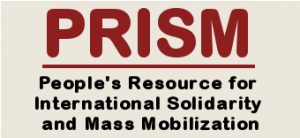
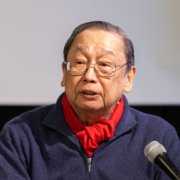
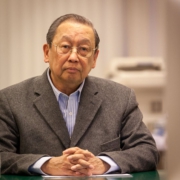
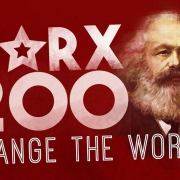
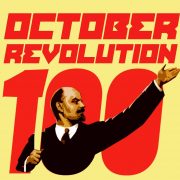
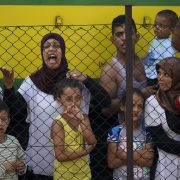


Leave a Reply
Want to join the discussion?Feel free to contribute!